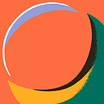The Alchemy of Becoming
A conversation with Tarantula: Authors And Art's Inspiration for February, Inma Hererra
Inma Herrera is a Spanish visual artist based in Helsinki. Her work converses with a multitude of materials and topics. Recently she carried out an in-depth exploration of the landscape in Svalbard, where her physical presence mediates the natural surroundings. Ideas that permeate her work are laying grounds for transmutations to take place. By transforming materials, energies, and elements with the capacity to change into something else, the artist investigates the ephemeral states of existence. These kinds of processes continuously feed her imagination, both as an artist who takes in account the vast multitude of life forms and in her role as a human in today’s society.
Herrera’s invested artistic inquiry illuminates new forms of knowledge and transports the viewer into a variety of topics of exploration by examining the space between a precise language and that which cannot be translated. With a curiosity for mutability and a desire to look beyond the surface of things, her work encourages states of ‘becoming.’ This metamorphosis is carefully guided when creating new objects, new sensations, or via the experience of threading on previously unknown territory. Each step in this transformative journey fosters a deeper understanding of the self and the world, inviting an exploration that transcends mere observation and encourages active engagement with the unfamiliar. Herrera clearly sets her own parameters.

Tarantula: Authors And Art: We met at the ARCO art fair in Madrid last year. Your piece on display, Celestial vessel (2023), impressed me. Based on my interest in alchemy and witchcraft, I believe this piece is tied to a medieval worldview. Could you tell us a little bit about the background of this work?
Inma Herrera: The story of Celestial Vessel is very special to me. I was preparing for my show at the Helsinki Art Museum (HAM) in September 2023, when I met with my great friend and curator, Pontus Kyander. We were drinking coffee and talking about ideas for the show, as well as his contribution to the upcoming publication, which would include the exhibition: To Earth, Born From a Rock, Museo Barjola, Gijón, Spain; and They Change Their Body Into Spirit, Helsinki Art Museum. The book (Matrix Mundi) was recently released in Spain and will soon be available in Finland.
During the conversation, I discussed my experiments with copper sulfate, the conceptual background of my previous exhibition in Spain, which explored the sacred nature of matter in relation to mining history, and my visit to the Texeo Mines near Oviedo (home to Europe's oldest copper mine). I also mentioned my fascination with two images: Giovanni di Paolo's Creation of the World (1445), which I just saw at the Metropolitan Museum of Art in New York, and the First Day of Creation, which is included in "Genesis" from the Nuremberg Chronicles (1493). Our conversation flowed beautifully as we explored the connections between the mineral world, the underworld, and the celestial dome.
Then he startled me by saying: "I happen to have a massive copper container in my garden," explaining how it had been sitting upside down in the rain for years. Without knowing exactly, it was most likely used to heat water for the sauna in the past. He offered it to me, and I, intrigued, asked him to send pictures. He sent one with his youngest daughter next to it to help me understand its magnitude.. A week later, his wife brought the vessel into town, and I carried it all across Helsinki—by foot, tram, through metro stations—until I finally brought it to my studio.
The vessel itself was mesmerizing. A container, yet more than that—a dome, a space to lose oneself in. Inspired by my experiments, I wondered, ‘What if I crystallized copper sulfate inside the vessel?’ I wanted to create the sensation of a sky full of stars, akin to Giotto's Scrovegni Chapel in Padua, Italy or the painted domes of Renaissance churches, with their deep blue heavens transporting us to other worlds. Thus, Celestial Vessel was born. In my studio, it stood among the plastic containers, copper spirals, and numerous jars, becoming the centerpiece of alchemical transformation.
Since you mentioned witchery—whether or not it invokes that—I think it refers to matter and transmutation, which has been my focus. Over the years, I’ve explored how materials interact and how they come alive as they transform. There is a silent dialogue in how matter organizes itself, solidifying into forms that embody ideas while remaining mutable.
Tell me more; what you refer to as a 'silent communication' piques my interest. It makes me ponder about language, and whether this stillness is due to a sense of untranslatability.
This dance of elements—minerals, crystals, water, air, temperature, and earth—represents matter's ability to transform into something new. Science has taught us a lot about matter's activity, but there is still a mystery outside the scientific lens. Whether you call it magic, alchemy, or spirit, the process alludes to something deeper—something both graspable and ungraspable. It demonstrates the duality of being and becoming, as well as how something can exist while in a state of change.
While there are numerous ways to explain this transformation, I intend to address it through art, seeking to touch on what lies beyond the titles and categories we assign to things. There is a beauty in the endless becoming that I attempted to capture with this piece.
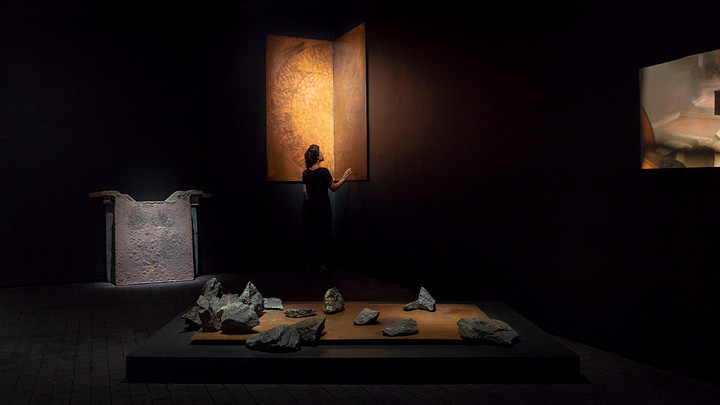
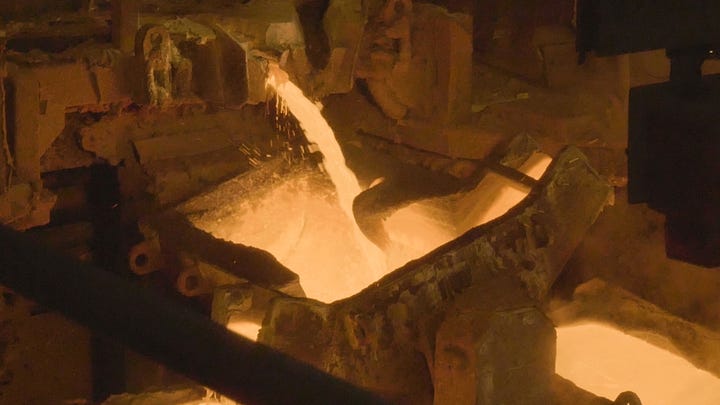
When you mention a 'dance of elements with potential to transform' and 'dualities of being and becoming,' it seems to me that you are also expressing a vision of your own artistic practice, perhaps even your role as a human being interacting with fellow humans as well as more-than-humans in today's world.
Yes, I definitely see this as reflecting both an artistic and a personal vision. Over time, I have realized that these two aspects are inseparable—they merge together. I no longer see a distinction between what I do as an artist and how I work in the studio, and how this affects my personal life. In fact, everything we do is an expression of who we are. My actions as an artist, and as a human being in society, must follow the same coherent path.
To elaborate, after years of practice, I have come to see that everything is constantly undergoing potential transformation. Even though we tend to categorize things as stable or permanent—and in some respects, they may appear to be—I wonder if this is more of a mental construct, a result of how we experience time. As humans, we have a highly linear sense of time, yet time itself—whether in absolute terms or through the lens of life on Earth—works quite differently.
We often wish to encapsulate things as stable because it provides us a sense of control, a way to understand and study them. This isn’t necessarily a negative thing; it's a natural human impulse to seek certainty. However, in reality, everything is in flux. This applies not just externally but internally as well, both psychologically and biologically. We have a sense of being—of knowing who we are—and in some absolute sense, that may hold true. At the same time, we are always changing, always becoming something else. To me, that’s what it means to be alive.
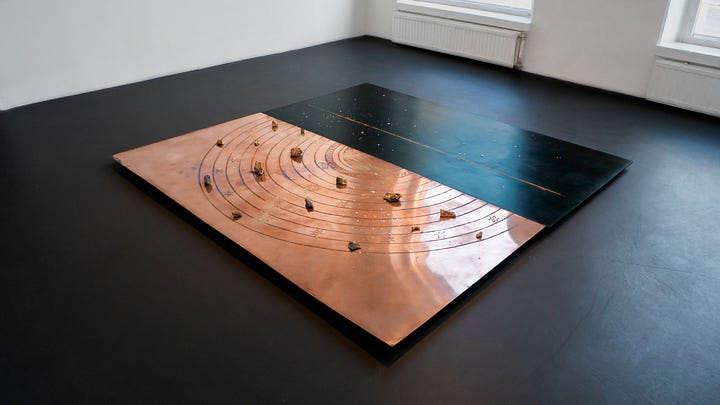



Even if you do not explicitly mention technology, I am wonder if you have any comments about the symbiotic link between human imagination and technology. What are your views on how this relationship affects our ability to reimagine what it means to be human?
I consider technology as an extension of human thought and body. For example, in my own practice, I see printmaking as a medium, a type of technology that enables me to translate ideas into physical form. In that sense, it is an extension of my body, a tool that allows me to convey something larger than myself.
When I talk about technology, I mean it in the broadest, perhaps even most archaic sense—a pencil or any tool you hold in your hand is considered technology. However, I recognize that when you mention technology, you are most likely referring to a much wider field, especially considering current advancements. We now have machines and tools that can perform nearly everything for us.
In a way, technology acts as an interface between our imagination and the material world. It gives shape to the ideas we hold in our minds, turning imagination into something tangible. Imagination itself is, in a sense, materiality in potential. It exists as a thought, but technology enables us to manifest it physically.
However, I believe there is a legitimate concern—or at least a point worth considering—about the dangers of over-reliance on technology. While technology has its own autonomous processes that can be fascinating and useful, even serving as a starting point for the development of creative ideas, there is a danger that it will dull our imagination or make us passive. If we rely too heavily on technology to make decisions for us or to perform creative tasks, we risk losing touch with what makes us human: our capacity to imagine and create, as well as the crushing reality that we have a body that feels and requires movement to function and survive.
What do you consider being the real power of technology?
The real power of technology lies in its ability to help us push the boundaries of our imagination and materialize ideas in more expansive, richer ways. As humans, we thrive in that realm of materializing ideas, of shaping the world. But if we allow technology to take over the spaces where imagination and decision-making are essential, there’s a risk that we might forget how to do these things ourselves.

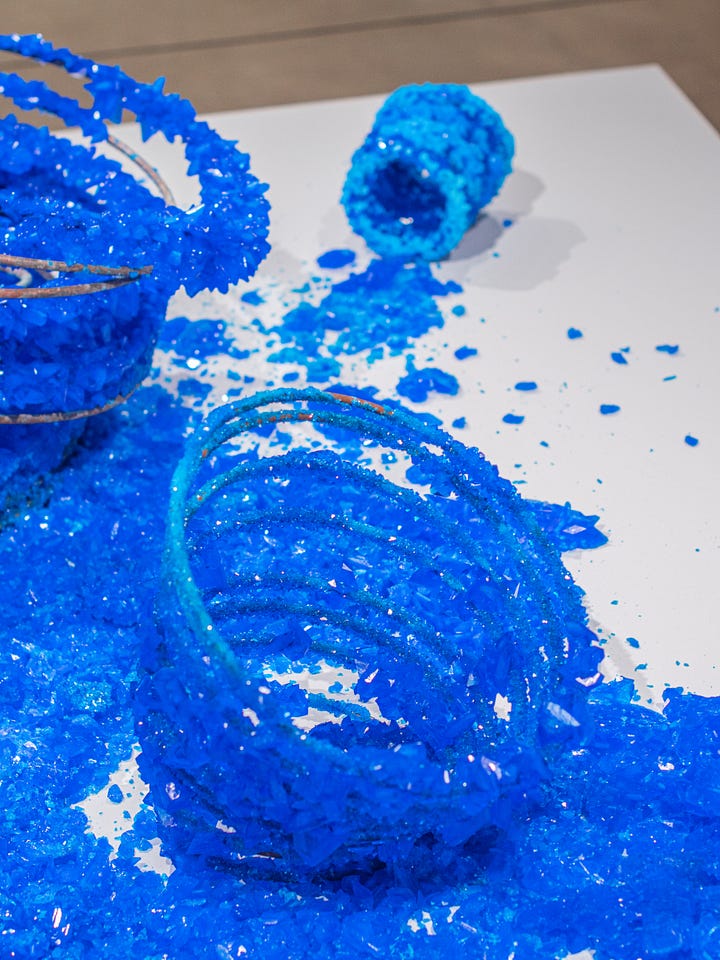
Please tell us a bit about your background and the way you formed and informed yourself on the path to become a visual artist?
My path as an artist has been quite academic. I decided to study art at an early age and enrolled at the Art Academy in Madrid at the age of 17, where I earned my bachelor's degree. I spent a year studying in Stockholm at the Royal Institute of Art before returning to Spain for a Master’s in Art Creation and Research. During that time, I also studied printmaking, graphic design, and artistic minting at the Spanish Royal Mint in Madrid.
My education was structured and consistent, particularly in the area of printmaking. It was not a conscious decision; it happened naturally. My initial encounter with printmaking was a transcendent, almost supernatural experience that deeply resonated with me. From that moment, I continued exploring and researching the medium.
However, after completing my studies at the Mint, I began to question my artistic direction—why I was working with this medium, and what drove me to create the way I did. This self-reflection led me to seek answers elsewhere, so I moved to Finland and pursued a two-year master's at the Academy of Fine Arts in Helsinki.
Graduating in 2017, my time in Finland was transformative. It offered me the freedom and space to experiment. It was a period of incubation for what was to come. I began to detach from the printed image, delving into the material processes behind printmaking. I explored tools, experimented with recording processes, and even dabbled in performative works, deconstructing print into its most basic elements. This dissection—breaking things apart and studying them—helped me make sense of my work and ultimately shaped the direction of my artistic practice today.
You really explored a wide variety of artistic paths which I find both brave and courageous. What would you say has been your driving force ?
Beyond my formal education, I think my curiosity has played a key role in shaping my practice. I've always had a deep desire to question things, to explore the origins and reasons behind them. This search for an ontology—an understanding of the structures that underlie everything—has driven my work.
I began to explore art around the age of 13. It became a space for me to wonder and imagine new worlds, which coincided with my interest in philosophy. When I first met philosophy in high school, it felt like a breath of fresh air—a doorway into a much larger world than what I was experiencing at the time. It taught me that there was so much more to life than what I saw and understood in those early years.
Over time, I’ve come to see how things that once seemed unrelated begin to connect, sometimes only making sense years later. Those seemingly insignificant details, memories, and fragments from the past eventually come together and inform the present.
During my years in Finland, I also started practicing a branch of martial arts based on the teachings of the Tao. I had already been practicing Kundalini yoga, and back then I was also exploring various bodywork modalities. These practices, over time, became a philosophy of life for me. They helped me understand the alchemy of both body and psyche, how the two intertwine, and how we often struggle to understand that interaction. The universe of matter behaves similarly. Through martial arts, I began to see the elemental world and its manifestations from a Taoist perspective, and this understanding mirrored the way I worked with materials in the studio. I build my artistic process through analogies with these ancient practices, both grounded in an exploration of the genesis of life.
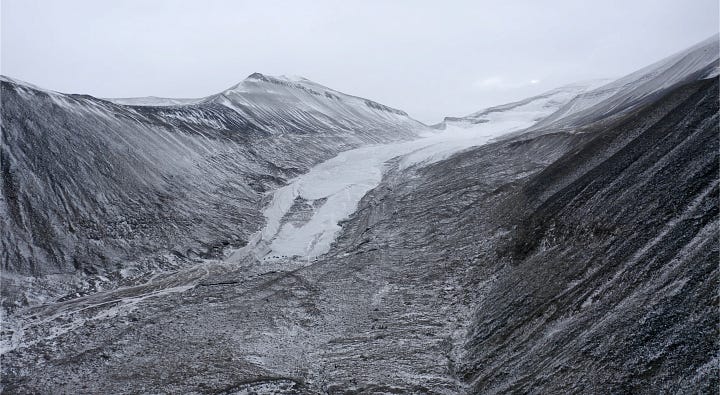
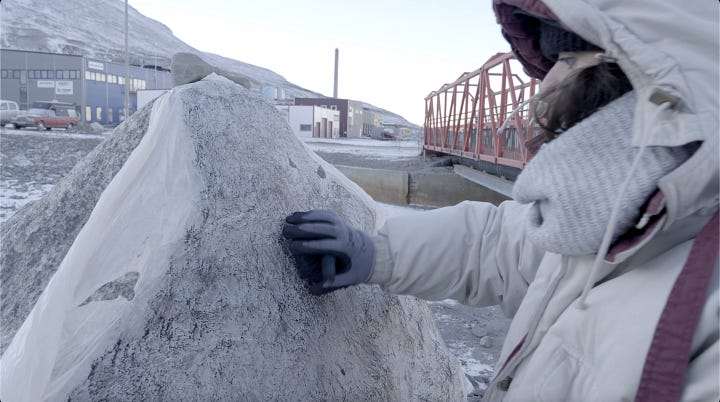
I understand you spent a large period of time in residency at ARTICA Svalbard. How did you experience this landscape, and how has it influenced your work?
I’ve spent two significant periods in Svalbard recently. The first time was in 2022, and I returned this past autumn, from September to October 2024. I’m currently working on a project that will likely be presented through a series of exhibitions. However, I must confess that I’m still not entirely sure how my time there has impacted my work. I tend to understand the full scope of what I’ve created only once it’s been presented, when the pieces are displayed in space. It’s only then that I can reflect on their meaning. However, Svalbard touched me deeply, which is why I felt compelled to return—and why I feel drawn to go back again soon.
It’s difficult to put the experience into words. There’s a sensation, an emotion, that lingers with me whenever I think about it. What stands out most is the way Svalbard made me feel—small, but in a sublime and awe-inspiring way. It makes you humble.
I’ve always been an urban person, but living in Finland taught me to better understand and feel the importance of nature, not just as something to respect—because that’s obvious—but as something vital to live in harmony with. The consequences of not doing so are clear. But in Svalbard, I felt something deeper: I sensed that the land itself was allowing us to be there.
It wasn’t just about me as part of a broader human collective. Rather, it felt like the landscape itself—especially the mountains—was watching me. There’s something about them that’s so magnificent, so imposing, and not just in their scale but in their presence. They are, in a way, the queens of that world, of that territory. I didn’t feel like I was looking at them; instead, it felt like they were looking at me.
It’s an interesting observation, how the landscape somehow comes to ‘possess’ you. As a yoga practitioner myself, I can imagine the feeling in the body and how that is translated into your thoughts and ultimately into your work.
The landscape is powerful, overwhelming, yet calm and grounded at the same time. I felt the earth beneath me pulling me into its stillness, as if it were communicating something beyond words. It was a reminder that it’s time to see the Earth—especially the element of earth itself—through a different set of eyes. The origins of many of the things I’m seeking to understand and express through my work seem to be there, in the land itself.
Svalbard’s breathtaking geography, marked by a journey through countless geological eras, has given a new twist to my practice. From Triassic ammonites to impeccably preserved plant specimens from the Cretaceous period, Svalbard is a geological treasure trove, harbouring fossils that reach back to the very beginnings of Earth. These fossils are the imprints of deep geological time, shaped by forces of sedimentation, pressure, temperature shifts, and water. The magnetism and force of the earth at this latitude are overwhelming, and they’ve inspired the direction of my upcoming project.
It will explore the geological genesis of our planet through experimental, non-invasive printmaking methods, drawing from the poetics of frottage—one of the oldest printmaking techniques– among other things. It seeks to connect the concepts of footprint, geological time, and extinction, combined with poetics associations in relation to the idea of skin and surface. For now, this is all I can reveal.
We are looking forward to seeing the finished result. Thank you for taking the time to chat with us. To find out more about Inma’s work, visit her website and her Instagram Page.
Buy our print magazine by clicking on the following link
https://tarantulaauthorsandart.substack.com/publish/post/129709764





